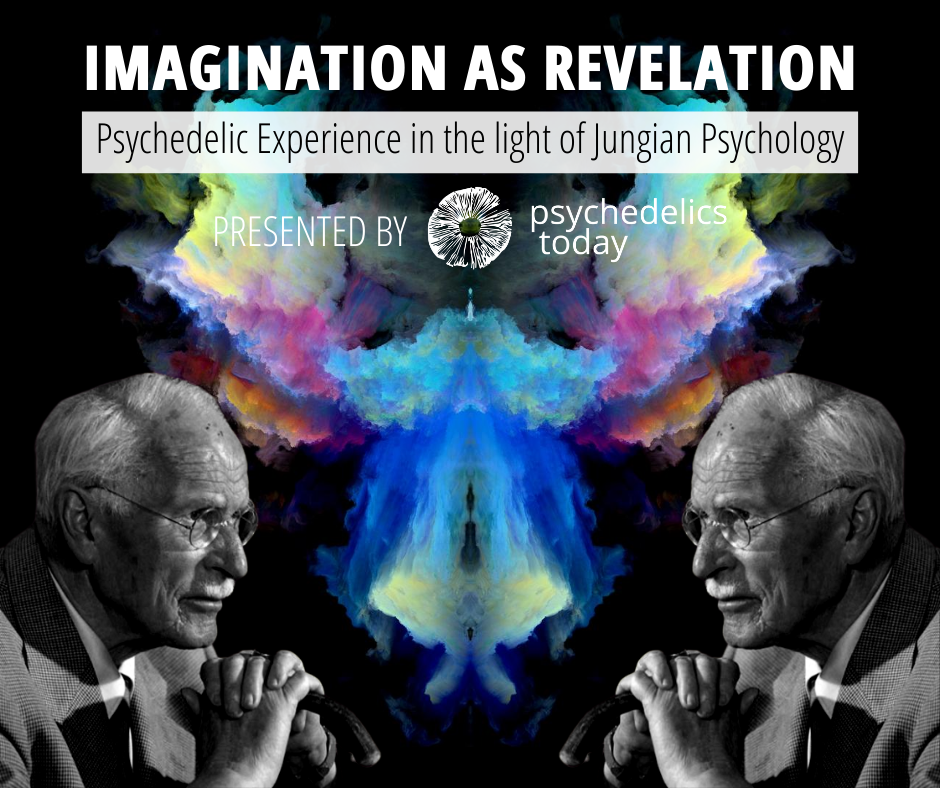By Denis Dubouchet and Rosine Fiévet
Working in psychotherapy with substances such as LSD, MDMA, and psilocybin in order to help heal depression, post-traumatic stress, or to overcome death anxiety has been the subject of many publications. Some authors, such as Stanislav Grof, have even gone so far as to establish new stages in human development. Just as Freud in his time conceived of psychopathology on the basis of trauma in the oral, anal, or genital stages, Grof postulates that certain behavioral disorders stem from suffering encountered in one of the four perinatal stages. In conjunction, both older (James Fadiman, Michael Mithoefer) and more recent authors (Benny Shannon, Eric Vermetten) have modeled psychotherapy settings that use work under psychedelic substance.
Our aim today is not to question these different approaches and their possible transferability to countries where the law prohibits such practices. Indeed, what are the implications regarding the relationship with therapists when working in a framework outside the law, which imposes secrecy towards the environment? What does this induce in therapy?
In France, the law prohibits the use of substances in psychotherapy. However, in our therapists’ offices, we receive people who have gone abroad to other continents to have psychedelic experiences (whether conducted according to traditional practices or not) or even to nearby countries where foreign shamans come to perform ceremonies. The people who come to consult in this context have either had a “bad trip” that still disturbs them, or are no longer able to reintegrate socially after a strong mystical experience, or, still further, want to understand and integrate what they have lived through.
This is “afterthought” process work that differs from what a therapeutic framework would have involved, with preparation prior to the experience, specific therapeutic support during the experience, and an integration (the phase where meaning is given, where the experience is symbolized) and assimilation (the phase when we are able to link this experience to all our past experiences and our history, enabling us to visit prior beliefs) of the elements that emerged during the experience. Indeed, the psychedelic experience induces a shock by opening up hitherto unknown spaces which the psyche does not know what to do with, or, if it does, it will literally cling to the visions that have arisen during the experience, even if this means being out of step with daily reality.
These people come knocking at our door because they know that in addition to our training as a psychologist and psychotherapist, we have been initiated into shamanic practices. As such, we are supposed to know all about this, or, at least, are willing to hear non-ordinary stories without limiting our diagnosis to psychopathology. Through this approach, we are asked to hear these accounts not as pure madness, but to take care of their experience as a salient moment in their lives, even if a painful one.
In doing so, the experiencers come to challenge our own reference grids and our anthropology. Applying a single theoretical reference frame as we usually do in therapy has the risk of greatly reducing our understanding of the experience, even if this frame of reference was based on the transpersonal current. From our point of view, Grof’s perinatal stages or the archetypes of Carl Jung or Gilbert Durand cannot, by themselves, sufficiently support the elaboration work required by our patients. We believe that elements emerging during a psychedelic experiment are polysemic. They must be looked at on several levels: symbolic, metaphorical, transcendental, processual, as well as on the ego and somatic levels. Each level can, in itself, feature several interpretations.

For example, if I see myself as a warrior killing the dragon to free the princess:
-This may symbolize a problem in my married life which is very difficult to solve (we talk about symbolism at this point, because in our culture, references to the warrior and the princess speak of couples, as seen in children’s tales).
-At the level of the ego, it may question my desire to be recognized by my wife, or manifest my need to be seen as a powerful man.
-At the transcendental level, I may be envisaging the influence of superior, and even very ancient archetypal forces impacting my life as a couple.
-On a metaphorical level, it could be interpreted as the work I have to do to channel masculine strength and liberate the feminine dimension of my being.
-On the somatic level, during this experience, I may have felt a lot of energy inside, which could point towards the fact that I have a lot of inner energy at my disposal to obtain what I desire.
-On a process level, if I follow through with my vision, it has me view my wife as a weak person in need of rescue. Maybe this reveals my thoughts on male/female relationships.
-And at the transgenerational level, it may evoke how one of my ancestors forced a marriage upon his family against their advice.
The symbolic and metaphorical levels can overlap, and it’s often a very fine line to distinguish between them, and not necessarily always useful to do so. However, it is essential for therapists to keep these different levels in mind so that interpretations can be broken down and not rushed through too quickly, for the sake of an immediate ‘aha’ moment that would obscure and eliminate all other possibilities.
At the same time, a single level of interpretation may contain several meanings. For example, at the symbolic level, seeing oneself locked in a dark cave from which no escape is possible can represent how my current life is functioning now, just as it can symbolize the overwhelming constraints which I am confronted with in my environment, or my inability to see my situation clearly, etc.
To shed light on our way of working, we offer below three very different clinical cases.
Marc is a 38-year-old man. He lives alone without any children. His mother died when he was 20, and he sees his father quite regularly. He has little contact with his brother, who lives far away. Marc has been to South America, where he tried mushrooms, peyote, and ayahuasca. During his experiences, he was given a highly spiritual task: to attain spiritual enlightenment and guide his fellow citizens on this path. He saw himself as having high spiritual potential and became convinced that this was his destiny. Unfortunately, his return home to France was not as smooth as expected. There were no followers to be found. His speeches were met with irony. He didn’t make a good Messiah. Disheartened and still convinced by the visions he experienced deep inside, he isolated himself and drifted into a state of depression.
When we meet him for the first time and ask him about the faith he has in his own visions, he answers that his mother had the gift of clairvoyance and that she spoke “The language,” implying the language used by Christ. So there was no doubt that he had to continue the work of his lineage, being himself, like his mother, a person different from others.
From a psychological viewpoint, we could make the hypothesis of narcissistic disorder, eased by an extraordinary ideal. This defense mechanism against narcissistic collapse, however, is undermined by the lack of disciples. The depressive movement is the reason for his consulting us, and not his psychedelic experiences, which he believes to have understood sufficiently well.
Initially, no attempt was made to deconstruct his defense mechanism. We looked at his mission and more precisely how he had come to this conclusion. Based on his visions where he had sensed divine power within and where he had seen himself conveying it to others, we came up with several other interpretations for each of the levels previously evoked.
For example, divine power was seen as a spark of life shared by every human being (transcendental level). It was no longer a superpower that he possessed and that made him into an exceptional being. Together, we worked on his representation of the visible and invisible worlds, and the beliefs attached to these representations; namely, whether every human being had a mission, who assigned it, and whether we all had some degree of freedom with regard to this mission.
We also looked to see if this mission could stand as a metaphor for the way his family functioned, in which one person was the leader of all. We explored his family lineages. Was this “gift” already present over several generations? He thought his maternal grandmother had it, but wasn’t sure. He could only confirm that this particular trait was not recognized by those around him. Rather, it caused exclusion. This was a form of transgenerational recurrence. He thus was able to see exclusion as something to be avoided and discontinued. We did not go any further on that level.
Next, we addressed the level of ego, in this case, the desire to be recognized, admired, loved, and to be able to guide others. Through this inquiry, he was able to let go of his feeling of being all-powerful. It reintroduced a notion of intersubjectivity that he was overriding. It was also a way of looking at his limits and of accepting his shortcomings, thus allowing acceptance of a sufficient level of frustration (in the psychoanalytical sense) to live in society.
We suggested to him to let his vision unfold to the maximum (on the imaginary level), push it to the limit, and see how that would be for him, and what he would learn from it. This is the process level. When we go to the very end of the rationale of “I have something divine that I must share with others,” it most often leads to a crazy, untenable position. In this situation, it could well lead to becoming a new Christ. Pushed to this extreme, he felt that it was not right.
During these experiences, he had felt full of energy. He told himself that it would be forever present in him and that he could rely on it for his new life projects. Working on the different interpretation levels allowed him to let go of the initial conclusion that had stuck him in an unbearable pattern. Working on his ego, he resumed humility, which, in turn, helped him find a job in nature that he easily adapted to.
Exploring the transcendental level through how he viewed the visible and invisible worlds set him back on a spiritual path that did not split him off from the people he knew. In this case, we can speak of a shock or intrusion that caused spiritual trauma. If psychedelics have been shown to open up a spiritual space that is helpful for the person, they can just as easily cause a form of trauma, because the experience cannot be integrated, thus locking the individual into an alienating dynamic.
This example shows us once again the regrettable absence of a containing setting when using psychedelics. Such experiments proposed in a different cultural context, with codes often unknown to us Westerners, do not allow the experimenters to integrate the contents of their experience.
The second situation refers to a person who underwent a bad experience using psychedelics with a sitter in a supposedly therapeutic context.
Simon had taken LSD. After marveling at the fantastic images and colorful music, he had found himself locked in a kind of hell with viscous, crooked, suffering beings. Some of them were obsessed with sex. Disgusted, Simon could see in these beings all the darkness of their souls. A voice sounded in his ears: “You’re just like them, just as bad… You’ll never get away with it… You’re doomed to stay here…”
In fact, until the end of his psychedelic experience, Simon would not leave this space. Very affected and upset by his experience, he shared it with his sitter, whose answer was: “The medicine knows what is good for you… Let this experience take you through.”
A state of depression ensued. Simon couldn’t bear to see this hideous evil forever lodged in the depths of his soul. He saw no way out of this condemnation. The darkness of the images he had seen on that trip had left a deep impression on him. He imagined he’d be stuck there even after his death. This state lasted more than three months without his sitter being able to help him any further. She was always evasive during their phone calls, probably overwhelmed by the situation herself.
It was at this point that Simon began work to heal his depression. We invited him to delve into the darkness he evoked and see how it was inscribed within. Through our elaborations, differentiation was made between his cowardice in everyday life, the fears that triggered aggression, the frustrations generating anger, and the possessive, predatory nature of his sex drive.
The darkness he witnessed during the journey was no longer a shapeless, slimy magma. In fact, each element of this hell could metaphorically represent an aspect of Simon’s personality. Viewed in this way, it provided a perspective to work with. By unfolding each element, we were able to extract him from the suffocating magma he couldn’t shake free from before.
This “bad trip” can be construed as an attack on the ego. The ego seeing itself in its darkest aspects with no hope of breaking out triggered the depressive episode. The attack on the ego also contributed to taking a good look at the reverse polarity: “Who do you think you are, to imagine you’d be free from negativity?” The process allowed Simon to identify his quest for an idealized self (being a good person in all respects), which cut him off from a whole part of his being.
His spiritual quest, as he practiced it, let him off from confronting his shadow areas. In fact, it really supported a cheap narcissism. However, it was actually through this soul-searching initiative that he finally was able to take into account the shadows perceived during his journey. He saw them as constitutive of all human beings, i.e. elements that everyone had to work on.
This transcendental perspective made him accept his shadow areas and brought him out of his self-condemnation that had frozen his being. Having to improve on these negative areas, as with any human being, brought movement back into his life. It also gave him more compassion for others and for their shortcomings.
At the process level, this experience was analyzed on two levels:
-The form of idealization that he held for his sitter was shattered. Through this idealization, Simon was looking for a knowledgeable figure who would pass on their knowledge to him. From the pupil being taught special knowledge, he became the grown man making the effort to search for himself. The fact that the sitter had failed to be of help forced him to give up his search for a master and to discover himself.
-The second level of the process consisted of pursuing his vision to the end, i.e. remaining locked up in this hell. Simon then asked himself who held such a power to condemn? Could God condemn a human being to such a degree?
Several hypotheses were offered to Simon on the basis of his spiritual beliefs:
-Christ (Simon had been raised as a Catholic) is a God of love and forgiveness. This is what He preaches. Simon could not see Him condemn in this way.
-Reincarnation makes us consider death a passage and not a prison.
-Returning to the original source is not what he had seen either.
Simon concluded that the only one who could condemn him to this hell was himself. He had to learn to forgive and have compassion for himself, which was quite different from a narcissistic drive.
At the same time, he had also associated the image of hell with what his father had endured during the war. This episode was never talked about in the family, and, as Simon saw it, everything about that war was censored in his family. Through his vision, it was as if that hushed-up part of family history was finally revealed. That’s how Simon interpreted it. Without talking about closer ties between father and son, Simon understood and accepted more of his father’s silence. It also opened up a whole new set of questions about his transgenerational legacies.
Working this way on the different levels enabled Simon to move out of his depressive state. This example shows that the medicine does not do the work on its own, contrary to what is sometimes claimed by some counselors. The qualification of the counselor/sitter is fundamental.
The third example tells us about a defaulting set and setting.
Elizabeth had been experimenting with a friend, Birgit. One day, Birgit suggested she should work with an LSD specialist she knew and admired highly. Elizabeth agreed, but some time before the experience, she got into an argument with Birgit.
On the day of her experience, Elizabeth was greeted very coldly by her friend, who quickly introduced her to the specialist before she left. After taking LSD, Elizabeth was shown into a small room, with a stained bed and deafening music. She remarked on the lack of cleanliness of the sheets, but at the insistence of the sitter, she moved in with resignation and disgust. After some time, Elizabeth got up and asked to move to a chair in another room. A power struggle immediately ensued. The sitter refused and, in a rage, Elizabeth physically grabbed her. Frightened, the sitter gave in. Shortly thereafter, Birgit reappeared. Elizabeth was beginning to come to her senses. Confused by the tense atmosphere, she decided to go home against Birgit’s advice.
This experience left Elizabeth in a deep state of unease and she severed contact with both her friend and the sitter. She thought things over without really understanding what had happened. Guilt took over.
A few months later, she signed up for a trip to swim with dolphins. Two striking events followed: a mother dolphin and her baby dolphin came to swim with her. Then, a hummingbird landed on her while she was lying on the sailboat in the open sea. These two events caused a shockwave. The discomfort disappeared and gave way to an old childhood memory of being in communion with animals. She had rediscovered the simple joy and wonder of her childhood nature.
Looking back with Elizabeth on what had happened, she saw these moments as signs of healing that her soul had granted her- an interpretation based on her spiritual approach strongly anchored in shamanism. This interpretation, based on a transcendental perspective, but also on a childhood experience, had reconciled her with life through connection to the animal world.
Yet there were further developments to the session. Her relationship with her friend Birgit changed. From a relationship of dependence, she went through a period of anger, sadness, and then detachment. She came to see how the emotional bond was tied in with a form of submission. This issue, playing out on the level of the ego, concerned all three persons involved. Each one was playing their part in the game (loyalty, displacement of the bond, and roles).

How the framework is set and how the setting (physical conditions) is organized will have a strong impact on the experience, since it conditions mindset and the inner security with which the experience is met: many psychic contents will be colored by those factors. It also underlines the importance of the sitters/caretakers overcoming personal issues in order to avoid feeding them back unconsciously into their work environment.
Thus the framework, which had become violent due to the climate of disagreement (above and beyond the mere dirtiness of the sheets and the intensity of the music), had, in turn, summoned Elizabeth’s physical violence. Realizing how everyone had participated in the unfolding of this session, Elizabeth was able to refrain from taking on all the guilt and to see what recurring patterns were at play in her relationships.
Curiously, Elizabeth had few memories of what she saw during her trip, other than her strong desire to admire the beauty of spring outside, from the vantage of a clean and quiet environment. It was as if the most important part of the experience revolved around what happened between these three people. In this situation, the process level stood out clearly. This episode also echoed on the metaphorical level for Elizabeth. It highlighted how the people who needed to take care of her had failed to do so, and how nature had made up for it.
The multiple levels summoned in the integration work (and their scope) require of the therapist a real freedom and skill in wielding the whole keyboard of interpretive planes, i.e. a vast opening to numerous therapeutic, symbolic, emotional, processual, transgenerational, and spiritual meanings, in the face of the infinite psychic contents unveiled in these experiences.
Through these three clinical vignettes, we propose a structured intervention framework quite different from what is applied in traditional therapies, and that we use when assisting clients with such painful experiences or “bad trips.” We insist on the polysemic nature of each vision and on the different levels to be explored:
-The symbolic level
-The level of ego
-The transcendental level
-The somatic level
-The process level
-The transgenerational level
Of course, when exploring all these levels, some may not be relevant to the person’s experience. Yet we ought not be satisfied with the first insight singled out, which would lead to an overlooking of the other equally relevant possibilities. We have often noticed that by focusing on a first interpretation, one failed to question the ego level, thus avoiding an awkward challenge.
In fact, this type of work unfolds in time. Integration and assimilation cannot happen in the span of a few rare sessions following the stressful experience. Indeed, these bad experiences often confront our clients with hidden elements of their functioning, beliefs, or history, i.e. elements which they were not ready to face, hence the importance of in-depth support.
About the Authors

Denis Dubouchet: A clinical psychologist for 35 years, psychotherapist, and Gestalt therapist, he trained at Michael Harner’s Foundation for Shamanic Studies, and he has worked with shamans and participated in ceremonies in their countries. He is the author of Etats de Conscience Elargie, Psychothérapie et Chamanisme (Ed. Dervy, 2017). You can reach him at denis.dubouchet@gmail.com.

Rosine Fiévet: A Gestalt therapist and coach for over 20 years, Rosine first discovered shamanism in 1981 with the women of Okinawa. She now regularly travels to North and Latin America to explore the traditions of the First Nations people to support her practice in ancestral healing. She has completed a full course in shamanism with the Sacred Trust in England. You can reach her at rosine.fievet@orange.fr.



